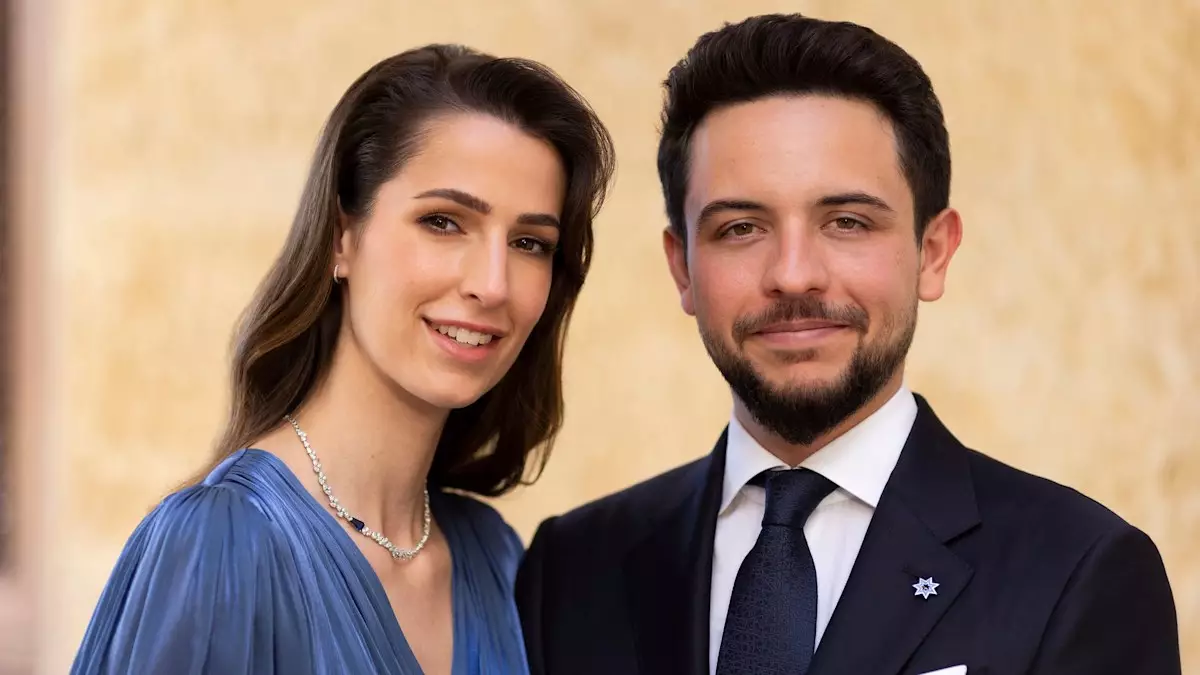In a dazzling display of grace and warmth, Princess Rajwa and Crown Prince Hussein of Jordan ventured out to embrace the spirit of community during Ramadan. Clad in a flowing sandy-brown ensemble that highlighted her regal poise, Princess Rajwa exuded a glow that captivated everyone around her. With every detail of her appearance carefully curated—from her artfully styled waves to her tasteful gold jewelry—she quickly became the focal point of the event. Meanwhile, Crown Prince Hussein, donning a more relaxed black polo and slacks, proved that charm need not be flashy; instead, it emanates from genuine warmth and a sense of duty.
Their joint appearance wasn’t merely for show; it was steeped in purpose. Through social media, Crown Prince Hussein articulated their joy in participating in an iftar meal alongside children from various orphan care homes. This act symbolizes more than just breaking bread; it underscores the importance of empathy, collaboration, and social outreach, which are critical tenets during the holy month of Ramadan.
A Heartfelt Connection with the Youth
The event took place at the Children’s Museum in Amman, a location designed not only for entertainment but also for educational engagement. These interactive exhibits provided children from 14 different social welfare centers the opportunity to play, engage, and learn, all while establishing personal connections with the royals—a significant moment for many children who might otherwise find themselves marginalized.
As Princess Rajwa shared her meal with older kids, engaging them in heartfelt conversation, Crown Prince Hussein roamed the exhibits, snapping photos and providing reassurance with his influential presence. In choosing to spend time with these children, the royal couple demonstrated a commitment to societal engagement that is often overlooked in the glamor of royal duties.
New Beginnings and Growing Family
The love story of Prince Hussein and Princess Rajwa extends beyond their public duties. Since welcoming their first child, Princess Iman, the royal couple has embarked on a new journey. The aura of joy surrounding their family is palpable, a sentiment they shared with HELLO! Arabia shortly after the arrival of their daughter. Princess Iman—whose name carries deep significance, meaning “faith” in Arabic—also reflects a tribute to family ties as it honors Prince Hussein’s late sister, creating a multi-layered narrative of love and legacy.
The arrival of their first child marks a transformative chapter in their lives, amplifying their bond and their collective mission to nurture a loving family. On Princess Rajwa’s first Mother’s Day, Prince Hussein’s heartfelt words encapsulated this sentiment perfectly: “Your presence fills our lives with joy,” he declared.
Expanding the Royal Family Circle
The family atmosphere took a step further with the birth of Princess Iman’s cousin, Princess Amina. This development not only expands the royal lineage but enhances the familial tapestry that binds the two families together. These royal children, born in close succession, represent the continuity of tradition, joy, and future unity within the Jordanian royal family.
Queen Rania’s social media posts celebrating this new addition echo the sentiments of many family members, attesting to the love that envelops these newborns. It’s a heartwarming narrative that extends to both sides of the family, revealing the pressing significance they place on love, kinship, and shared happiness.
Reflections on Modern Royals
In an age where the roles of royalty are constantly evolving, the actions of Princess Rajwa and Crown Prince Hussein highlight an essential shift towards relatable, compassionate leadership. Their involvement with the youth—conducive to nurturing solutions for social issues—offers a refreshing contrast to an often-hidden world of privilege. As modern royals, they serve not only as symbols of their nation’s history but also as advocates for change, emphasizing empathy and social responsibility within the framework of their royal duties.
Through their actions, the couple is indirectly teaching future generations about the importance of service, love, and connection. Their endeavours to engage with children from diverse backgrounds illuminate a path toward a more inclusive and compassionate society, one where everyone—royal or common—has the opportunity to experience kindness and joy.

